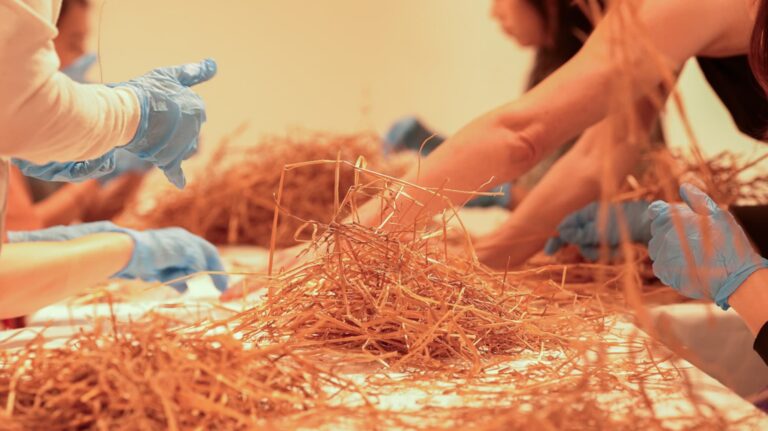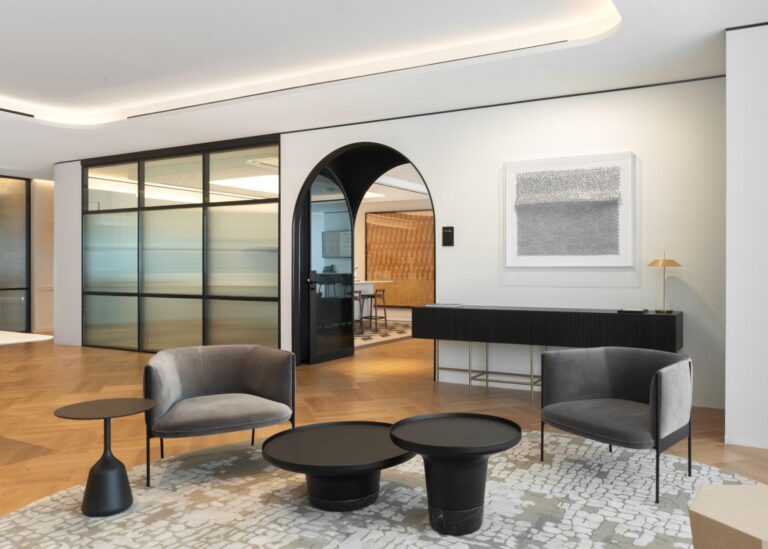
From the earliest forms of writing to the latest digital technologies, the history of humankind has also been a history of knowledge. Data, information, archives, and records — these are keywords for the upcoming UOB-NAFA Southeast Asian Arts Forum, held at the Nanyang Academy of Fine Arts (NAFA) from 7–8 August 2025.
Organised yearly by NAFA’s Institute of Southeast Asian Arts (ISEAA), the hybrid event brings together artists and scholars from across Southeast Asia to discuss important issues the region faces. Themed Imaginary Library: The Art of Embodied Chronicles, the Forum’s sixth edition raises a variety of questions: How do we remember the past, and how is this data (used, for instance, to train artificial intelligence algorithms) affecting our future? How do the ways in which we produce, store, and communicate data shape how we make sense of our world and ourselves?
Whether they’re bringing archival materials to the general public or reinterpreting the past through cutting-edge technologies, this year’s presenters put forth diverse answers and raise more questions still. We speak with four of them — Aliansyah Caniago, Gomesh Karchanapayap, Farah Wardani, and Debbie Ding — to find out more.
Aliansyah Caniago: Making memories matter

Aliansyah Caniago will begin his presentation at the Forum with a one-on-one massage performance involving a member of the audience. For the Indonesian interdisciplinary artist, this action recalls childhood memories of receiving massages from his grandmother while she recounted stories about their hometown, Barus, in North Sumatra. The massage will also utilise balm from the camphor tree — a vulnerable species, native to parts of Southeast Asia, that has played a key role in his practice since 2016.
Initially, Caniago’s interest in the camphor tree (Dryobalanops aromatica) stemmed from a desire to connect with his hometown, from which the tree takes its name of kapur barus (“the chalk of Barus”). “When my parents talked about their hometown,” Caniago, who moved to Java as a child, explains, “I had no emotional connection.” While working closely with villagers in Java as part of his artistic practice, he grew curious about his own roots. “What about me? What about my family? Why am I here?”

Through his research combining oral histories, colonial archives, and fieldwork, Caniago uncovered the storied past of the camphor tree. Initially utilised in local healing traditions, the tree became of interest to Dutch colonisers as it could be used to produce celluloid film. While Caniago’s grandmother used camphor balm for massages, his grandfather worked as a cinema projectionist in Medan — one of the many individuals displaced from Barus by environmental loss and economic hardship due to colonial exploitation of the camphor forest.

Since 2016, Caniago’s preoccupation with kapur barus has led him to do everything from a site-specific performance in Taiwan (Tree Without Roots, 2018) to watercolour paintings based on specimens from London’s Kew Gardens (Copy(What)Left, 2022). It has also enabled him to build unexpected connections with audiences, such as when he presented his massage performance to viewers from the Batak diaspora in Austria last year. “The participants’ perspectives really enriched my story … That’s, I think, what makes this performance beautiful. The story is not one-sided, but reciprocal or two-way.”
Caniago dreams of one day rewilding Sumatra with the endangered camphor tree. For now, working across different sources of knowledge like oral histories and colonial archives allows him a more complete picture of the tree’s story, though his archival research has led him to realise that much of this information is still hidden and difficult to access. “To make this history and archive visible,” he concludes, “is my challenge.”

Gomesh Karnchanayap: Reimagining heritage

At the Forum, artist and educator Dr. Gomesh Karnchanapayap will be sharing about four of his works that employ technology to explore Thai heritage and culture. These include a virtual exhibition about King Rama IX, a mixed reality experience on the symbols used in sacred tattoos, a virtual reality (VR) piece imagining the moment of Buddha’s enlightenment, and another VR journey simulating the path to Nirvana, complete with spiritual obstacles.
With a multifaceted background in computer science, fine arts, and design, Karnchanapayap started working in new media art over 20 years ago, learning how to use software programmes like Maya, ZBrush, and Medium. While he initially looked into digital sculpture due to practical constraints, he soon realised that digital mediums afforded a certain freedom, allowing him to forego the extensive planning needed for physical sculpture and to just “go with the flow.”

His exploration of digital mediums developed in tandem with his interest in Thai culture, sparked when he returned from his studies in the United States. Realising that he was unable to explain the mythical creatures adorning Bangkok’s Grand Palace to a foreign friend, Karnchanapayap dove deep into the study of these chimeras, pouring his efforts into the website himmapan.com (named for the sacred forest of Thai legend). Over the years, the creatures documented in this expansive “digital library” of Southeast Asian myth have informed Karnchanayap’s work as well as his collaborations with other artists in mediums such as illustration, comic books, and 3D modelling.

Besides his Forum presentation, Karnchanapayap’s work will also be on view in the exhibition Sentient Being, Virtual World: Revelations in Digital Ethnographies, created in collaboration with his colleague Atithep Chaetnalao, as well as in the game Seeking Chimera: Myths in Southeast Asia, a game co-developed with NAFA and hosted on UOB’s metaverse space. He will also be running a digital sculpture workshop for NAFA’s degree students.
But despite his extensive experience in the digital realm, Karnchanapayap remains keenly aware that digital and physical mediums both have their strengths and weaknesses, preferring to work with a blend of the two. At the end of our interview, he also emphasises the new challenges posed by the Information Age’s tremendous flows of information and the need to preserve digital data for posterity. “I think the most important part is how to categorise [digital materials], display them, and maintain and keep them for future generations.”
Farah Wardani: Working with art archives

On the Forum’s second day, independent curator, consultant, and cultural producer Farah Wardani will be participating in a dialogue session on how recorded artworks can inspire critical discourse. With decades of experience across museums, art spaces, and biennales, including a 2015–2019 stint as Assistant Director of what was then the Resource Centre at the National Gallery Singapore, Farah brings to the table her insights from working with archives in both institutional and alternative settings.
From 2006 to 2015, Farah served as Director of the Indonesian Visual Art Archive (IVAA), a non-profit archive and community space based in Yogyakarta. Evolving from the Cemeti Art Foundation, IVAA was formally established in 2007 and boasts a collection of 16 million books, documents, photographs, and other records relating to Indonesian contemporary art. While it is on a brief hiatus till October this year, IVAA typically puts out publications — such as its 2011 Data Catalogue, a 4-volume compilation of archives curated along specific themes — and organises public programmes such as talks, panel discussions, film screenings, exhibitions, and tours.

Farah explains that there are substantial differences between archival practice in national institutions and in spaces such as IVAA. For example, major institutions like the National Gallery Singapore may acquire and conserve archival materials with an eye to complementing curatorial research or contributing to scholarly art histories. National museums and archives may also bear a greater public responsibility to the citizens of a country.
IVAA, on the other hand, takes a looser approach to the archives and their use in creative projects and public programmes. “At IVAA,” Farah says, “we position ourselves as artists — we treat [our work] as an art practice. Our role is more egalitarian in that sense. We also work collaboratively, most of the time, in a collective mode with the artists, curators, and researchers.” Founded on the belief that Indonesia’s contemporary art has a strong and direct connection to its societal development and social issues, the organisation plays a contrasting but complementary role to other archival institutions in the country’s cultural scene.
Near the end of our conversation, Farah points out the crucial role of the archive in documenting art by female artists, ethnic minorities, and other marginalised communities, as well as ephemeral art forms like street and performance art. This may be especially true in Southeast Asia, where, due to factors like political upheaval and the relative newness of formal art institutions, many original artworks can no longer be found. In such cases, Farah notes: “The only thing we can rely on is the archive.”
Debbie Ding: Creating “counter-archives”

Last but not least, Singaporean artist and scholar Debbie Ding will be presenting two works at the Forum. The first, The Library of Pulau Saigon (2015), draws upon the history of an island in the Singapore River that was eventually subsumed into the mainland. Though an archaeological dig was conducted on the site in 1988, turning up everyday objects like tiles, coins, and knives, none of the original objects survive. Based only on a textual list of these objects, Ding has used technologies such as deep learning and 3D printing to imagine what these objects might possibly have looked like.
The second work, The Collector (2022), is a VR game inspired by the trading history of Singapore and the ill-fated voyage of the Fame. The ship contained natural history specimens, drawings, personal papers, and other records amassed by the colonist Stamford Raffles during his time in Singapore, which were all destroyed by fire in 1824. Interested in the flows of commodities in and out of Singapore during the colonial period, Ding extracted data on over 500 of these commodities. She then used algorithms to transform images of these commodities into round “tokens,” which players are instructed to sort into yellow containers marked with various categories, from the straightforward (“Medicine,” “Arts & Crafts”) to the abstract (“Afterlife,” “Deep Thoughts”) and the truly bizarre.
Ding, who has been working as an artist for over 15 years, thinks of these creative projects as “counter-archives.” In contrast to official archives, which often have a formal system of organisation and an air of objectivity, her counter-archives are much more uncertain and open-ended. How many possible forms might there be for the same everyday object, like a spoon or a comb? How might different players sort the same tokens differently? For the artist, the counter-archive opens up new ways of viewing the world — suggesting that “even the stories that are small or marginal can be valuable to the bigger scheme of things.”
___________________________________
The UOB-NAFA Southeast Asian Arts Forum takes place at NAFA and virtually from 7–8 August 2025. Find out more and register for free at seaartforum.nafa.edu.sg (registration closes on 1 August at 12 noon).
In conjunction with the Forum, NAFA-UAS (University of the Arts Singapore) and Thailand’s Silpakorn University are jointly presenting two exhibitions. Streams of Change: Art. Agency and the Environment runs at the Ngee Ann Kongsi Galleries from 16 July to 17 August, while Sentient Being, Virtual World: Revelations in Digital Ethnographies runs at the Lim Hak Tai Gallery from 22 July to 24 August 2025.
Header image: Aliansyah Caniago with a visitor at his exhibition Tortor.
This article is produced in paid partnership with the Institute of Southeast Asian Arts at the Nanyang Academy of Fine Arts (NAFA). Thank you for supporting the institutions that support Plural.
Support our work on Patreon
Become a memberYou might also like
Lucy Davis on Art, Ecology, and Inter-Species Connections

Runs In The Family: The Paintings of Pateo Chang and Melissa Teo


